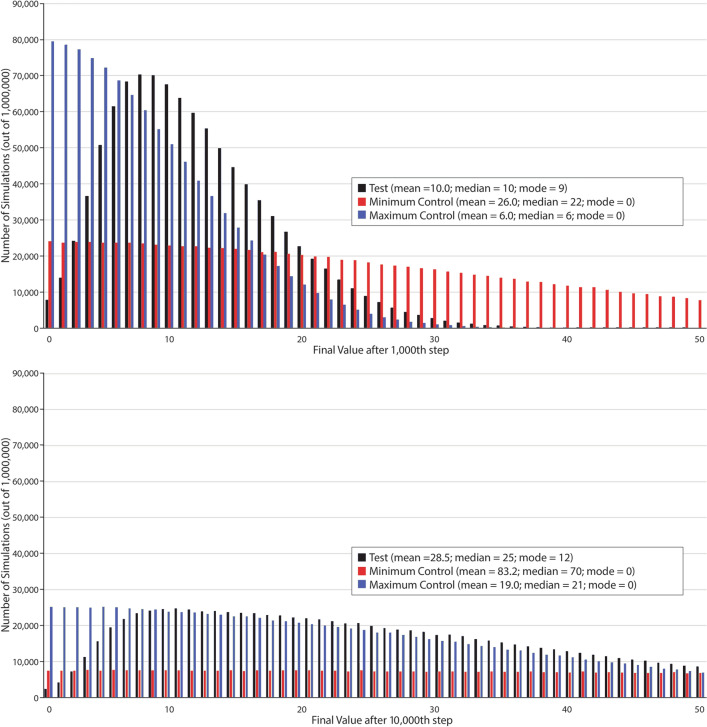Fig. 11.
A generalized simulation demonstrating the effect of genetic drift over a trait that determines mutation rates. Because increased cellular impermeability leads to a lower mutation rate, we proposed that genetic drift would favor increased cellular permeability in the absence of any other selection pressures (see Fig. 9, black line). The test simulation mimics the effects in cellularity genes as an evolvable “fidelity value” (probability of mutation = 0.5x, where x is the fidelity value). An additional mutation step mimics the probability of insertion or deletion mutations in the original model, which are independent of cellularity. Controls mimic the mutation rates of populations with a constant cellular impermeability value of 100% (“Minimum Control”) or 0% (“Maximum Control”). Simulations were run 106 times for each case and fidelity values were recorded at the 1000th step (top) or the 10,000th step (bottom). These simulations show an important effect of genetic drift occurring over a character that affects mutation rate. Specifically, the distribution appears to preclude low values, unlike both controls wherein the mode value is 0. As such, relatively high levels of cellular impermeability are nearly certain to evolve within our model in the absence of any selection pressures

